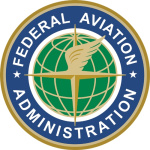- Industry: Government
- Number of terms: 35337
- Number of blossaries: 0
- Company Profile:
The engine of a twin-engine airplane whose loss would cause the greatest yawing effect.
Industry:Aviation
The first-stage compressor in a dual-spool gas turbine engine. The low-pressure compressor is called the N1 compressor and its speed is not governed. It seeks its own best speed as the atmospheric conditions change so it can furnish a relatively constant mass of air to the inlet of the second-stage compressor.
Industry:Aviation
The fit of a shaft in a hole in which the hole is drilled undersize and cut with a reamer to the correct diameter. Reamed holes have smooth walls and a consistent diameter.
Industry:Aviation
The fixed conical fairing centered in the turbine wheel. The exhaust cone straightens the flow and prevents the hot gases from circulating over the rear face of the turbine wheel.
Industry:Aviation
The flat surface of a propeller that strikes the air as the propeller rotates. The face of a propeller corresponds to the bottom of an airplane wing.
Industry:Aviation
The flight match number at which there is the first indication of air flowing over any part of the structure at a speed of Mach one, the local speed of sound.
Industry:Aviation
The flight operating mode from takeoff through landing for a turbo-prop engine. Alpha mode includes operations from 95% to 100% of the engine’s rated rpm.
Industry:Aviation
The force acting about the longitudinal axis of a propeller blade, and which tries to rotate the blade to a low-pitch angle. As the propeller rotates, centrifugal force tries to flatten the blade so all of its mass rotates in the same plane.
Industry:Aviation
The fuel-air mixture ratio that, when burned, leaves no uncombined oxygen nor any free carbon. It releases the maximum amount of heat, and therefore produces the highest exhaust gas temperature. A stoichiometric mixture of gasoline and air contains 15 pounds of air for 1 pound of gasoline.
Industry:Aviation
The gas generator portion of a turboshaft, turboprop, or turbofan engine. The core engine consists of the portion of the compressor used to supply air for the engine operation, diffuser, combustors, and turbine(s) used to drive the compressor. The core engine provides the high-velocity gas to drive the fan and/or any free turbines that provide power for propellers, rotors, pumps, or generators.
Industry:Aviation
